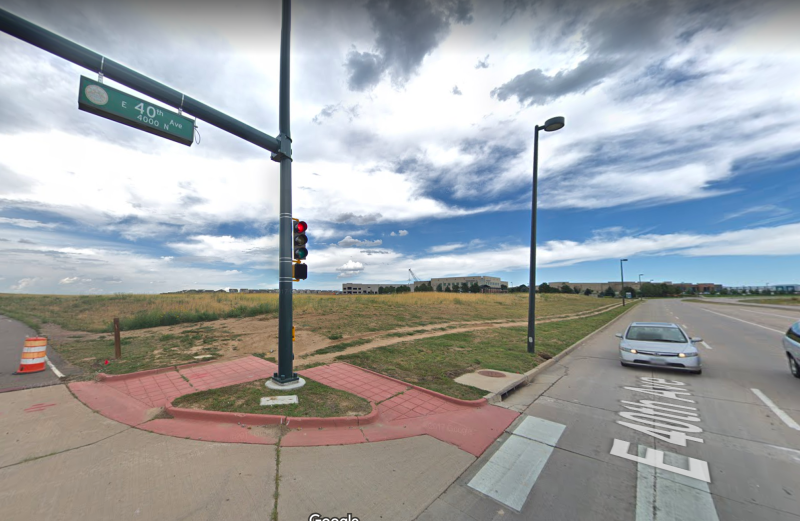The Uphill Battle to Make Montbello and Green Valley Ranch More Walkable
Far northeast Denver was built around driving, but a plan to guide the next 20 years of neighborhood change aims to change that.

A birds-eye view of the neighborhoods in Denver’s far northeast corner reveals squiggly, meandering streets and acres of parking lots — even around RTD stations, which should anchor walkable places.
Montbello, Green Valley Ranch, and Gateway are only navigable by car because that’s how they were planned (thanks in part to the build-out of I-70 in the 1960s). The area’s first neighborhood plan since 1991 could change that.
“This community, particularly Montbello, was a master planned community from the 1960s when the car was king,” said Eugene Howard, who’s leading the project for Denver Community Planning and Development. “And now we are recognizing the value of multiple modes and there are certain areas where we need to re-imagine, rethink, so they work for pedestrians.”

The Far Northeast Neighborhood Plan process began a year ago, and the city has convened several community meetings to map out a framework for shaping neighborhood development. The final plan is scheduled for release later this year, and its expected to recommendation changes to streets and land uses that will create a more walkable neighborhood, with better pedestrian connections to transit and parks.
Great ideas — but only if the city acts on them. The transportation section of the Montbello and Green Valley Ranch neighborhood plan from nearly 30 years ago had similar aspirations to “develop convenient and attractive alternatives to auto travel,” and that didn’t happen.
Today, about 70,000 people live in these neighborhoods, which surround the Peoria, Gateway Park, and 61st and Peña RTD stations. Missing or slim sidewalks are the norm. Blocks are too long and pedestrian crossings are too scarce. What few crossings exist tend to be wide and dangerous.
Montbello and Green Valley Ranch are among the most car-dependent neighborhoods in the city. Car ownership rates are higher than any other part of Denver, according to city documents. Land use is oriented around driving: In a 15 square-mile study area, fast food joints, mostly drive-thrus, outnumber grocery stores 34 to 3.
Residents don’t want to have to drive everywhere. “I’m getting to the point where I probably shouldn’t drive,” said Mimi Broadsky, who attended one of the community planning meetings last month. Broadsky says she wants benches and safer crossings to help her get around.
Walkability is something local residents “pretty clearly desire,” Howard said.
At the same time, other public projects in the area are going to make walkability harder to achieve. The Hancock administration is set on widening 56th Avenue. The Hickenlooper administration, with Hancock’s support, aims to widen I-70, the road that contributed to far northeast Denver’s auto-centric character in the first place.
Retrofitting streets and redeveloping parking lots will help, and there’s plenty of untouched parcels where walkable urban form can flourish. “In this planning area… there happens to be a lot of undeveloped land, especially as we look at the rest of Denver,” Howard said. “And those in and of themselves are opportunities because there’s nothing there yet.
“If the community believes that a particular area that might be your traditional strip mall with surface parking can and should be something different, that’s what this process is also doing — letting people tell us where they think those opportunities are so we can then to the best of our ability act on them.”
It’s encouraging to hear officials talk this way about what far northeast Denver could be, but keep in mind that these plans aren’t policies — they’re guides for the next 20 years. Even with the best plan, it’s still up to the city to fund and implement street redesigns, and to enact zoning changes that will change the trajectory of development in northeast Denver.


